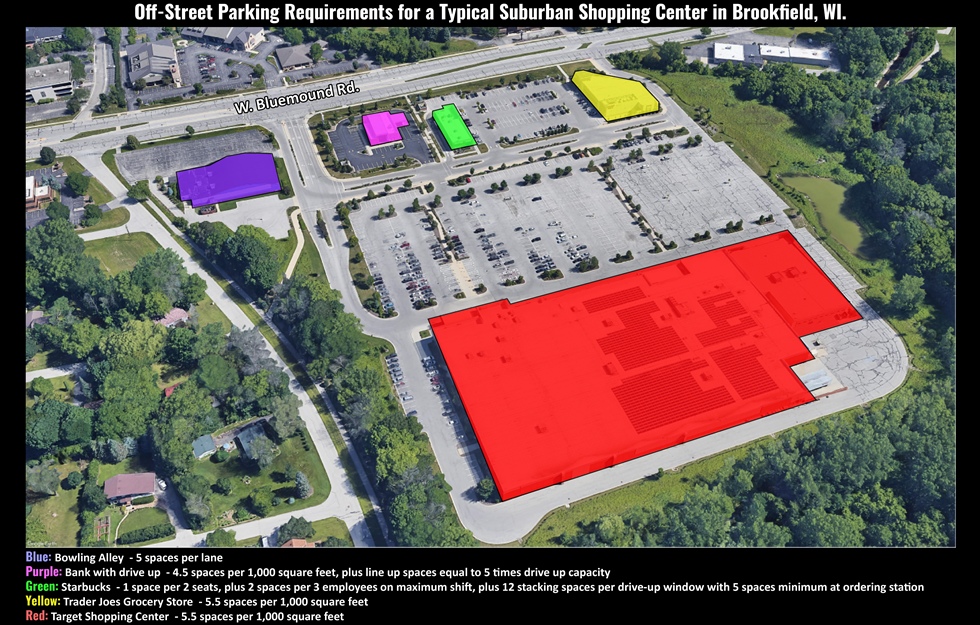As Wisconsin has become more auto-dependent, local ordinances have responded to accommodate vehicles.
Working under the surface, our regulations have helped mandate a land use pattern that is conducive to vehicles at the expense of all other forms of travel. Often overlooked, zoning codes and municipal ordinances like mandatory parking, minimum lot sizes, and street width requirements have shaped, and now define, the places we live.
This article will explore mandatory parking minimums, which have an outsized impact on our land use patterns.
Mandatory Parking Minimums
Beginning in the 1930’s, cities began to develop off-street parking requirements (also known as mandatory parking minimums) as a way to accommodate the huge influx of vehicles. Most of the parking lots that you see exist largely because of these mandates.
Today, we require that our communities build a ton of parking. These rules are often very specific and arbitrarily set by local officials.
Take the City of Brookfield’s minimum parking requirements. It requires five spaces for every lane at a bowling alley, 5.5 spaces for per 1,000 square feet at a shopping center with a grocery store, and 0.5 spaces per seat at a movie theater. These rules have mandated a land use pattern where far more space is given to parking than the building itself.
Parking minimums are a detriment to our communities. They favor sprawling development.
Parking requirements make infill projects difficult, if not impossible. Developers flock to undeveloped land where devoting such enormous space to parking is much easier to achieve. These off-street parking requirements are also pushing buildings farther apart.
This happens in both downtown and suburban development. Driving downtown you may notice large parking lots between clusters of buildings. In the suburbs, vast parking lots encourage users to drive and make pedestrians feel unsafe and out of place. This is the direct result of mandatory parking minimums, which make it harder to use other forms of transportation.
Cities across America, including Stevens Point, Ashland, and Fitchburg, are reducing or removing parking minimums. Other Wisconsin communities can look to Ashland, Stevens Point and Fitchburg on how to remove parking minimums and reduce their impact on sprawl and suburban development.
1000 Friends encourages Wisconsin communities to reconsider their local regulations that may be inadvertently supporting suburban sprawl and auto-oriented neighborhoods.
Minimum parking requirements, like those in Brookfield, can be found in many communities across Wisconsin. We support changes to local ordinances that support mixed-use development with compact, pedestrian-focused lot sizes. This can be challenging, if not impossible, to achieve with outdated regulations. Check out part 3, where we explore minimum lot sizes.
This is the second post in a series highlighting the relationship between land use and transportation – the Transportation Connection – below is a full list of articles in the series.
Part 1: The Connection between Transportation and Land Use
Part 2: Mandatory Parking Minimums
Part 3: Minimum Lot Sizes
Part 4: Local Ordinances (Street Widths)
Part 5: Highways as Land Use

